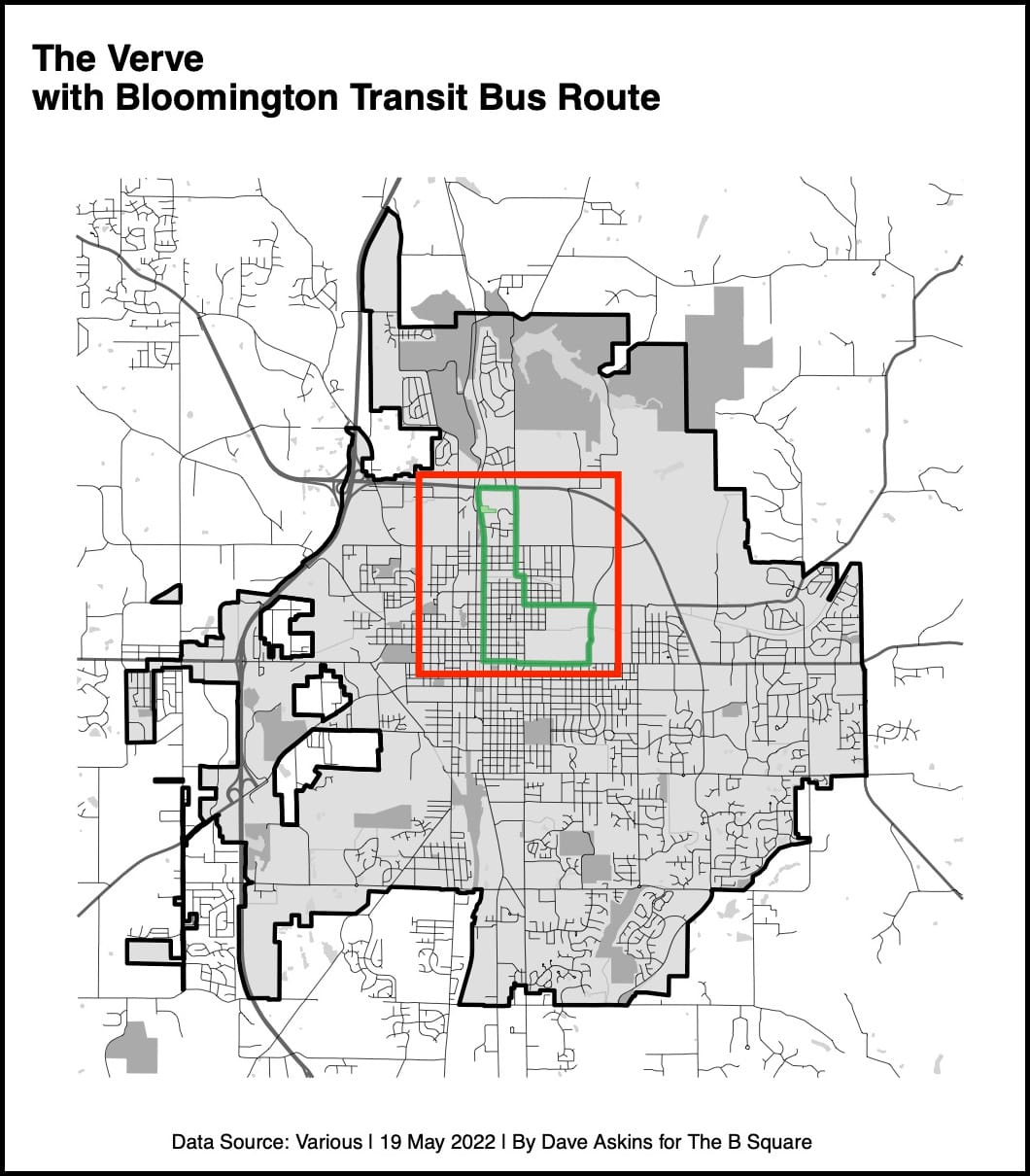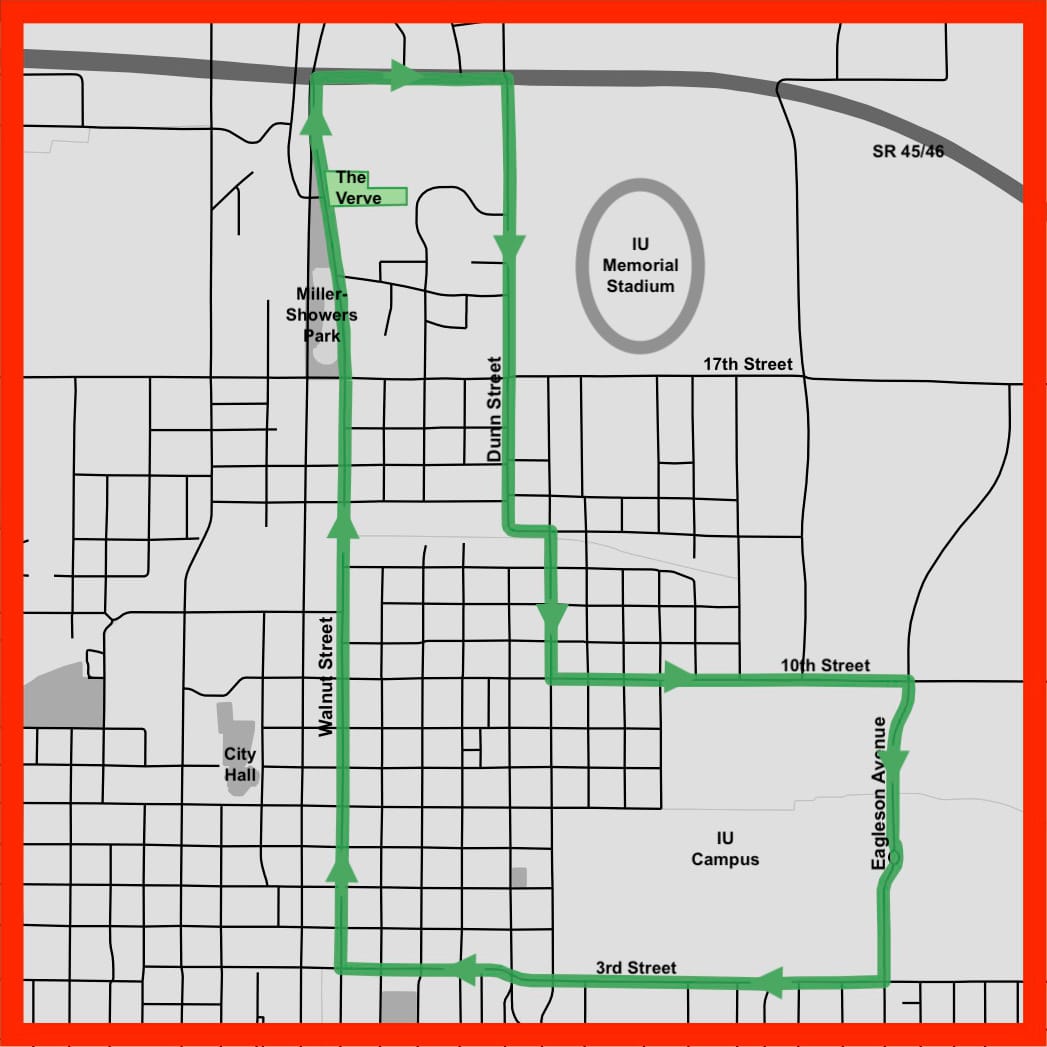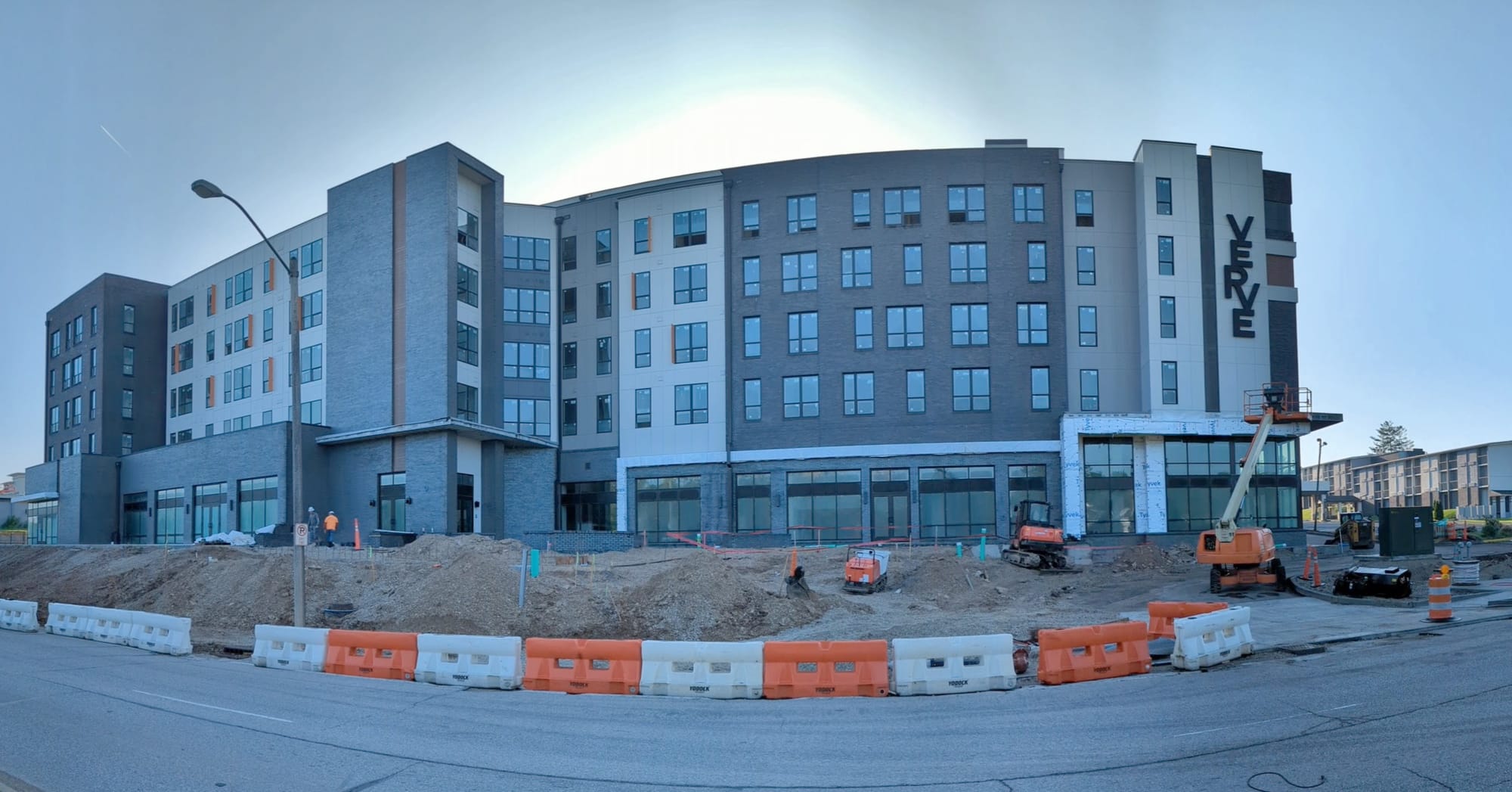Bloomington alters zoning to reduce monoliths, spur affordability; city council could push more tweaks


At its Wednesday meeting, Bloomington’s city council approved a raft of changes to the city’s unified development ordinance (UDO) that were in many cases purely technical in nature.
But some of the changes were meant to support specific policy goals— like preventing massive buildings that have been called as “monolithic” in character, and encouraging developers to use the affordability incentives that are already included in the UDO.
Developers will now get a smaller building floor plate “by right.” They’ll get a bit of a bump in square footage if they use either the sustainable development incentive alone or the affordable housing incentive alone. But they’ll get a significant increase in floor plate area, if they use both incentive types.
The changes to the UDO approved by the city council were spread across four different ordinances. The legislation had been initiated by planning staff and recommended for approval by the city’s plan commission.
During an interlude in Wednesday’s proceedings—to solve some remote connectivity issues—Bloomington director of planning and transportation Scott Robinson reminded city councilmembers that they, too, can initiate changes to zoning code.
While the city council can’t undertake a UDO change all by itself, Robinson noted that under state law, the council could pass a resolution to direct the plan commission to consider specific UDO ordinance changes. The relevant state law is IC 36-7-4-607. More typically in the last few years, zoning ordinance changes have originated with planning staff, which have been reviewed by the plan commission.
Based on council deliberations and commentary Wednesday night, there are some topics that might be ripe for councilmembers to refer to the plan commission, even if that has not been a common approach.
On Wednesday, among the amendments made by the council to the recommended ordinances were some changes related to the former IU Health hospital redevelopment site.
The council voted to strike some footnotes affecting the area north of 1st Street, south of 2nd Street, east of Maple Street (extending south of 2nd Street to 1st Street), and west of Morton Street. That’s part of the area of the former IU Health hospital to be redeveloped as part of a new neighborhood that has been named Hopewell.
Instead of including footnotes about the Hopewell area, city councilmembers want to see a “zoning overlay district” for the neighborhood to be developed there—an overlay that incorporates in a comprehensive way topics that include parking restrictions.
The city council’s interest in having more of a say about the future planning for the Hopewell neighborhood surfaced in early April when the redevelopment commission’s request for an alley vacation was rejected by the council.
On Wednesday, city councilmembers also indicated they want to see additional types of zoning regulations—for example, on maximum building widths—to prevent the kind of monolithic buildings that have provoked concern. For critics of such structures, the parade example of a monolithic building in Bloomington is the former Smallwood development now rebranded as The Avenue on College.
Councilmember Matt Flaherty pointed out that even with the smaller floor plates, if there’s an odd-shaped lot, there could be a very wide but shallow building that has the same kind of visual impact that the zoning standards are trying to avoid.
Under the changes enacted by the city council on Wednesday, the floor plate of a multi-family building cannot ordinarily be larger than 10,000 square feet. If a development uses either the affordable housing or sustainable development incentive, a building can add an extra 15,000 square feet of floor plate area 5,000 square feet for a total of 15,000 square feet.But a development that uses both the affordable housing or sustainable development incentive can double that, for a total of 30,000 square feet.
Sustainable development incentives in Bloomington’s UDO include a few different options, including cool roofs, solar energy, and building efficiency.
Affordable housing incentives include two tiers. For Tier 1, at least 15 percent of the total dwelling units have to be permanently income-restricted to households earning less than 120 percent of the HUD AMI (area median income) for Monroe County.
For Tier 2, at least 7.5 percent of the total dwelling units have to be permanently income-restricted to households earning below 120 percent of the HUD AMI for Monroe County. But another 7.5 percent have to be permanently income-restricted to households earning 90 percent of the HUD AMI for Monroe County. An increase from 80 percent to 90 percent for Tier 2 was one of the changes approved by the city council on Wednesday night.
For 2022 the Bloomington, the HUD Metro median family income estimate is $91,400.
On Wednesday, planning director Scott Robinson said the floor plate incentives stemmed from the staff’s experience over the last year, seeing developers take advantage of the sustainability incentives, but not the affordable housing incentives.
The 213-unit complex at 17th and Arlington is a recent example of such a project, which took advantage of just the sustainability incentive. It was approved by the plan commission on Monday night.
During council deliberations on Wednesday, one of the threads that emerged was “by right” development, compared to the kind of negotiation that is possible in the context of a planned unit development (PUD). A “by right” development doesn’t need city council approval—it just needs a site plan review by the plan commission. But a PUD is a change to the zoning, which means the city council has to approve it. And it’s that city council approval that provides the context for a negotiation.
On Wednesday, councilmember Steve Volan mentioned The Verve on North Walnut, which is a 750-bed student-oriented housing complex nearing the completion of construction. Volan cited it as an example of a PUD where the city council negotiated for a specific public transit benefit.
For The Verve, which was not known by that branding at the time, the city council negotiated a roughly $140,000 per year commitment to fund a new Bloomington Transit (BT) public bus route. And at its meeting this week, the BT board approved the contract with The Verve for the bus service. The building is supposed to be ready for move-in for the start of Indiana University’s fall semester.







Comments ()